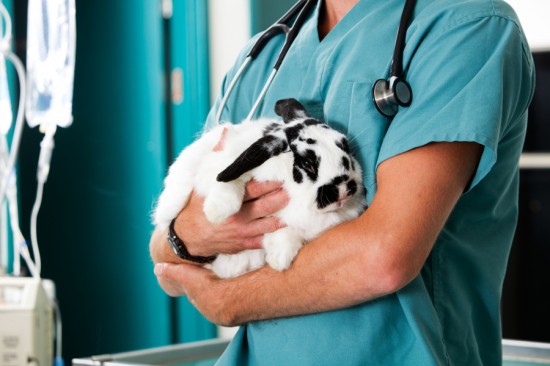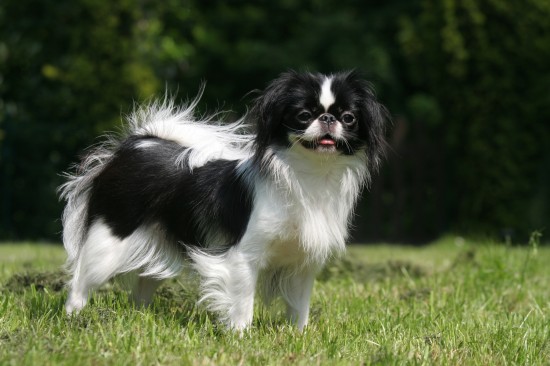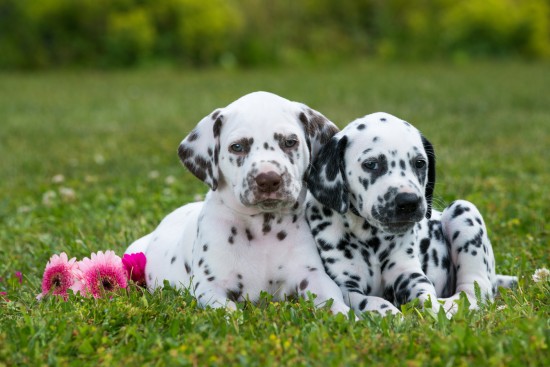Canine Communication -- How Pet dogs Communicate
Dogs express themselves by their body postures, facial expressions, ear with tail movements, and a array of sounds.
Dogs and people generally get on very well, but they are nevertheless unlike species with separate modes of communication. Humans rely more on language and less on nonverbal communication abilities. Along with they seldom sit back and just look at what is going on. These are the very stuff you'll need to do if you want to know your dog and how she relates to you and her world. If you survey her and her body vocabulary, you'll rapidly know how things are with her. You'll even walk to the spot where you can tell what she'll be up to next.
Some canine signals are pretty common and mean much the same regardless of whether the dog is communicating with a person or another dog. When a dog is play bowing, her rear end up, her front down and her tail wagging, you can be positive she is issuing an invite, "Let's play," to whomever she's talking to.
Then there are the faint nuances among individual pet dogs. Examine how your dog's pose changes, how she employs her ears, eyes, brows, lips, nose, mouth, tail and coat. Also acquire a close look at how her body language alters, depending on the status. You'll in next to no time work out how she expresses herself when she's happy, anxious, proud of herself, sleepy or whatever. But don't assume you can read a strange dog. Picking subtle differences in strange dogs is tricky, even for experts.
A calm dog and a mildly apprehensive one can be easily confused, as can a dominant dog and an aggressive one. To in essence grasp the nuances of canine body language, expressions and sounds, you need to be familiar with the characteristics of both the breed and the individual. If a dog's tail is low, for illustration, it generally means she's feeling insecure, but some sight-hound breeds hold their tails this way as a matter of course. A Greyhound or a Whippet with its tail between its legs is probably feeling perfectly fine.
Submissive dogs contract, while confident dogs expand. A frightened dog makes herself as small as she can by moving everything inward. She shrinks slightly, tucks her tail, lays back her ears and averts her eyes. She may "surrender" by rolling over and exposing her belly. If she's so scared she wants to bolt for it, she'll pull back her lips and her weight will be back over her haunches.
A confident dog makes herself seem larger by raising her hackles, carrying her tail straight out or up, and standing absolutely erect. She makes and holds eye contact and her mouth is usually closed. If the dog's body appears to be leaning forward (in contrast to an erect stance) and her ears point forward, she may be aggressive and about to attack. An aggressive dog may also have a fixed stare, her mouth closed, top lip pulled up and bottom lip down to show lots of teeth, and a snarl.
A relaxed dog looks quite different. She wags her tail in a neutral put up-not stiffly, or raised high or tucked under. Her mouth is often open, her ears are held half-back or relaxed, her weight is evenly distributed on all four legs, and there's no sign of tension or threat in her eyes.
Most dog owners know that their dogs are capable of a variety of sounds: barks, whines, squeals, yelps and howls. But although dogs sometimes sound as if they are trying to talk, these noises aren't attempts to mimic our language. Your dog knows that vocalizing is a great way to get your attention, so of course she will make a noise to make you look at and listen to her.
Dogs also make noises to manipulate other dogs. In a two-dog household, when one dog
is snoozing on the sofa, the other dog may cleverly use sound and body language to invite her to come and play. As soon as the first dog is on her feet, the second will jump onto the sofa and steal that prime post. Dogs often seem to bark to distract an opponent, or whimper to put another dog off guard.
A growl, bark or whimper can mean different items at different times. A bark is very effective for attracting, attention, and can also signal alarm, happiness, frustration or surprise. In general, the faster and higher the bark, the more excited or agitated the dog. Growls can be deep and threatening, or more like moans of pleasure during a good back rub.
When you listen to your dog, you'll soon know her vocal repertoire. But if you're with an unfamiliar dog, trust your instincts and don't take her owner's word that an alarming sound is actually harmless.
Hordes people think that low-ranking dogs avert their eyes when you look at them, while high-ranking ones meet your eyes and stare straight back. But in different situations a dog may look strongly at you, look sideways at you or refuse to look at you at all, whether she is feeling super confident or meek as a mouse.
When your dog stares at you, staring her down won't necessarily convince her that you're in charge. Besides, it's a mistake to assume that a stare indicates your dog is trying to dominate you. Sweet, submissive dogs often stare with melting adoration at their proprietors. To work out your dog's true intentions, you will also need to look at her facial expressions and at her body posture. It also helps to know something about your dog's background.
What intense eye contact does indicate is that the dog is fascinated in something that she may like, dislike or be afraid of. If your dog is overexcited or she's easily distracted, pay close attention to her when she makes eye contact elsewhere. She may be getting ready to pull on the bridle, lunge, bark, attack or run.
Scent is a powerful communication channel for dogs. Each dog has a unique scent, which is contained in a liquid in the anal glands, two sacs located in the anal muscles. The scent is released whenever a dog defecates, urinates or wags its tail. From it, another dog can tell the age, sex and status of the dog whose scent it is. High -ranking dogs will hold their tails high, releasing as much scent as possible. Nervous or submissive dogs often hold their tails between their legs, making their scent less noticeable and so dfawing less attention to themselves.
This scent is the reason dogs spend so much time urinating-and sniffing-when they're outside. Urine, or scent, marking is a characteristic of wolves and dogs and is often used to position ownership of a territory. When dogs are walked, especially males that haven't been neutered, they sniff every tree, announce and fence, looking for the scent marking of other dogs. And when they find one, they cover or add to the scent by urinating on it, to stake their claim. That's why a male dog leaves small spurts here and there instead of one big puddle-he keeps a little urine in reserve in case he wants to leave his signature on yet another object. Marking is usually considered a male trait, but some female dogs also do it.
Not every dog that marks outdoors does so to establish territory or publish dominance. Millions do it to get and vacation information. From what they sniff, they learn who was there before them, and by leaving their mark, they become news for the next dog passing by.
Sometimes you can misread your own dog, or another dog that you don't know well. Not all canine messages have a single meaning. And dogs, like humans, give conflicting signals. Contradictions will always exist among body language, eye contact, vocalizations, actions and intentions, in both humans and dogs. To humans, a smile is a sign of friendship and happiness. The same action in dogs-baring the teeth and drawing back the lips-can signal aggression. However, some dogs, especially Dalmatians, smile when greeting or submitting. This is not to say that you should never smile at your dog; dogs learn to read human signals, even when they differ from their own. But a strange dog may take a different interpretation. In that case in point, it may be wise to save the smile until the dog knows you better.
Gestures and posture are other areas of possible confusion between dogs and humans. People tend to gesticulate when they talk to dogs, such quick hand movements can be unnerving, because they don't know what they mean. Humans tend to stand tall when greeting each other, and dogs; dogs don't always appreciate this, because they tend to take a more circumspect approach, sidling up to strangers and acting cautiously until they're sure of their reception.
Watch your dog and note the mannerisms that precede excitable, fearful, silly or aggressive behavior. This will help you to anticipate sudden movements and to keep your dog under control if she gets excited.

 Myxomatosis In Rabbits
Myxomatosis In Ra
Myxomatosis In Rabbits
Myxomatosis In Ra
 How Easy Is It To Look After A Guinea Pig?
How Easy Is It To
How Easy Is It To Look After A Guinea Pig?
How Easy Is It To
 Best Birdwatching Spots In Cumbria
Best Birdwatching
Best Birdwatching Spots In Cumbria
Best Birdwatching
 Japanese Chin Hereditary Health And Average Longevity
Japanese Chin Her
Japanese Chin Hereditary Health And Average Longevity
Japanese Chin Her
 Things To Consider If You Have Your Heart Set On A Dalmatian Puppy
Things To Conside
Things To Consider If You Have Your Heart Set On A Dalmatian Puppy
Things To Conside